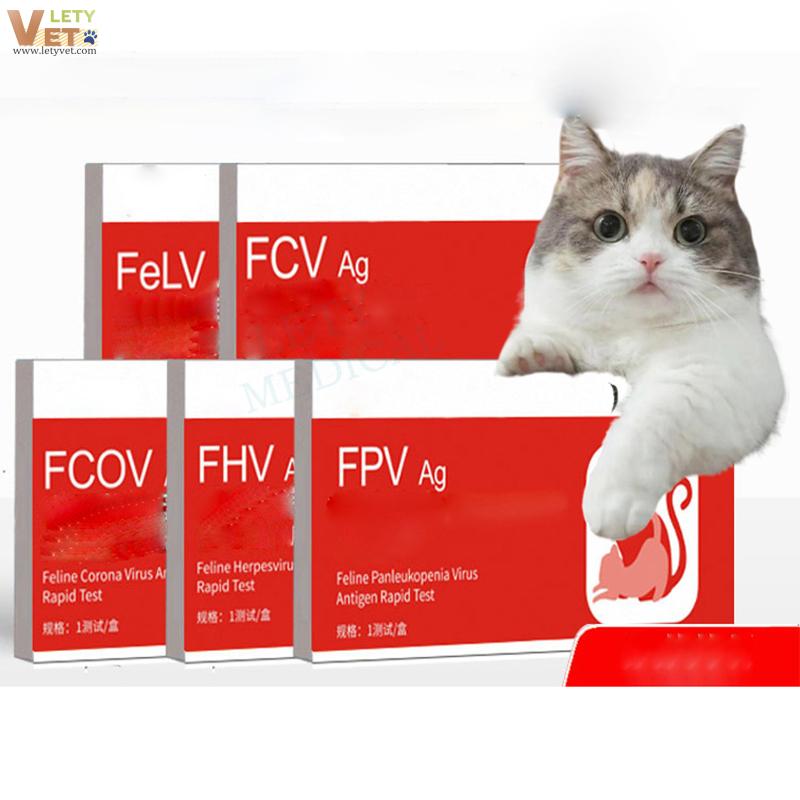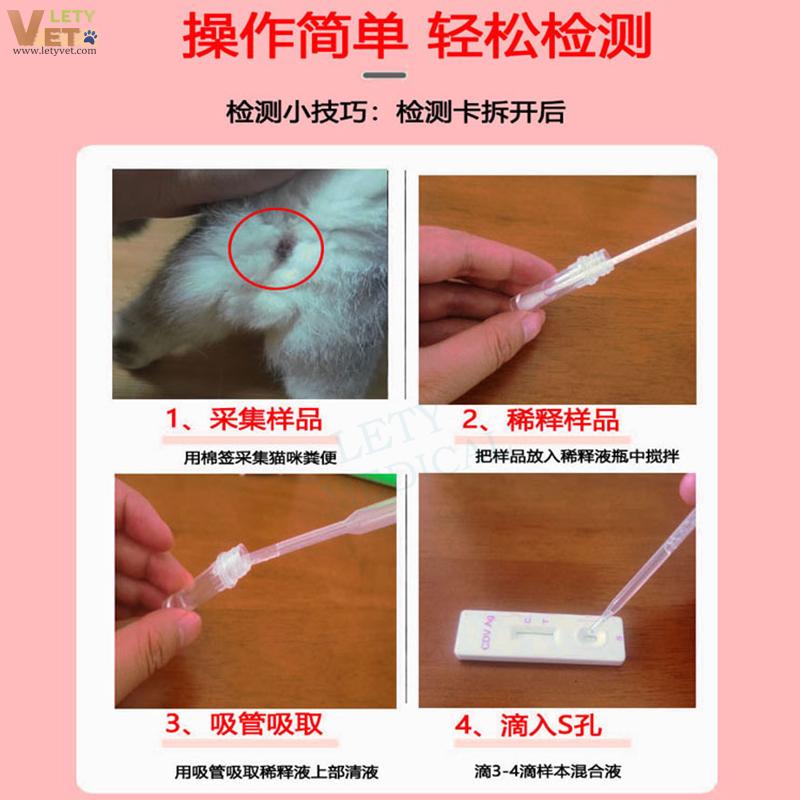Cat Plague Virus Antigen Test Card Cat 5 Health Self-Check Card




Clinical symptoms of cat distemper virus
After feline plague infection, the clinical symptoms vary greatly, and depending on the physique of the cat and whether the cat has been immunized or not, the clinical symptoms may vary from asymptomatic to mild symptoms and even death due to leukopenia of such severity. Generally speaking, the symptoms of a young cat after infection will be obvious, and the incubation period is 20 to 12 days. The first symptoms are lethargy, loss of appetite, fever usually accompanied by vomiting symptoms, basically do not appear early diarrhea, after two or three days, symptoms will become more and more severe, such as fever, large amounts of watery diarrhea, severe dehydration and electrolyte disorders.
Species of cat coronaviruses
There are two main types of coronaviruses that cause disease in cats:
feline enteric coronaviruses and feline infectious peritonitis viruses. Enteric coronavirus is the most common form of infection in cats and usually causes mild gastrointestinal symptoms, such as diarrhea and bloody stool. Some cats have fever, vomiting and other symptoms.
Feline herpes symptoms
Increased inhalation intensity, loud breathing, severe eye ulcers (less common), corneal rupture (rare), death (rare). The most common clinical signs include: sneezing, watery eyes, pink eyelids (e.g. conjunctivitis), lethargy, fever, non-eating/anorexia, drooling, dehydration, and exhalation
Feline calicivirus symptoms
FCV is most commonly found in multi-cat environments. Cats in shelters, pet stores, and places where the risk of exposure is higher - 25 to 40 percent of cats in these places may be carriers. Cats experience flu-like symptoms, including sneezing, nasal congestion, fever, and sometimes drooling. Large amounts of discharge may come from the eyes and nose. In more severe cases, cats can also develop inflammation and ulcers on the lining of the tongue and mouth. Drowsiness, mild claudication, and loss of appetite may also occur.
Feline leukemia symptoms
In the first few weeks of infection, symptoms will be mild, and the following conditions may appear: inactive, inactive, lymph node enlargement In addition to the above three symptoms, some of the following symptoms may occur: anemia, blood in the stool, loss of appetite, lethargy, abnormal excretion habits; Dehydration, difficulty swallowing, excessive drinking, coughing, vomiting; Jaundice, weight loss, eye problems, arthritis, neurological problems (possibly paralysis), inability to have children; Unhealthy hair, abnormal gum color, pleural effusion, tumors; Ulcers in certain areas, such as: mouth, nostrils, anus, vagina, eyes.


Silicone Foley Catheter to UK
Micro Blood Collection Tube to Philippines
CPV Ag Rapid Test kits to Indonesia
Contact: LETYVET
Phone: +86 13802725767
Tel: +86 13802725767
Email: info@letymedical.com
Add: Room 102, No.25 Huanan Street, RenHe town, Baiyun district, Guangzhou